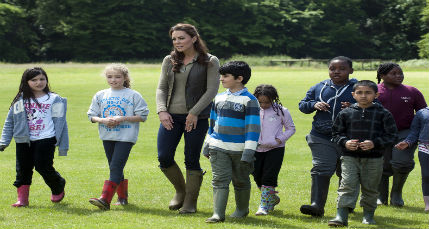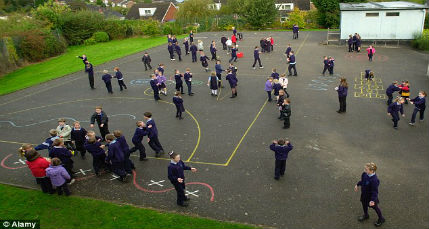When children first attend school and embark on the formal processes of learning to read and write, school learning purports to enable children to realise and release, as it were, their intrinsic potentialities of interpreting written text. Moreover, this release of potential is supposed to help children acquire a higher-order cultural awareness of their society, so that they may engage in the use of logic, science and religion. This is what has been dubbed “the classical torch” view of literacy and schooling (see Thomas, 2000: 43 for further details), and it has been criticised on certain grounds—that, for example, it creates a void between literates and non-literates, and that if school fails to achieve its goals for many of its pupils, the latter are doomed, as they are incapable of participating effectively in cultural interaction and their society’s high culture. Nevertheless, even if some students fail to become “literate”—mainly because much of school learning is concerned with the “technological” features of writing (ibid.: 44)—they still have a rich oral capacity, which has been neglected or even ignored by formal schooling. It is this rich oral capacity that will be the springboard for our discussion; yet, we will not focus on “non-literates’” tradition, which is said to be at variance with that of “literates.” We will only briefly examine the cultural dynamics of teaching, which should take into consideration the needs of all students.
Towards a cultural pedagogy
Generally speaking, all learners are potentially capable of achieving most learning objectives, provided that certain conditions of learning are met: adequate feedback, sufficient time on task, an awareness of the import of the material under study and, of course, an appreciation on the part of the teacher of the cultural context in which the learning is embedded. In this light, information about what styles and methods both teachers and learners employ in order to solve problems can tell us more about the context of learning and teaching than just knowing that the learner has provided the correct answer. In other words, it is more important to take a process perspective on schooling rather than a product one, inasmuch as there are a whole lot of mechanisms at work in the “process” which can affect the “product.” This perspective is an essential component of a pedagogy that addresses cultural needs. As Thomas (2000: 80) notes,
[r]esearch which identifies different cultural pedagogies, and describes the impact they may have on improving educational quality, will be a welcome antidote to the possible unifying excesses that educational change in the context of modernisation and globalisation is likely to bring.
The Nature of Pedagogy and Cultures of Teaching
In this chapter, we will address two issues: the changing nature and traditions of pedagogy, and the belief that teaching is to be viewed as a set of cultures.
The Changing Nature and Traditions of Pedagogy
The subject of pedagogy can be traced to the time of the Greeks, but in modern times most of what permeates developments in pedagogy has come from psychologists and educationists such as Piaget (1971), Bruner (1966), Shulman (1986), Schon (1983), and Bennett (1993), to name but a few. Sifting through the relevant literature, it is possible to discern three different theoretical traditions pertaining to research into teaching and teacher education that have emerged in the 1990s. Two of these traditions have been termed by Zeichner (1992) as “academic” and “social efficiency,” while the third tradition, referring to teaching as a “cultural process,” has been examined by Olson & Bruner (1996), Kruger & Tomasello (1996), and discussed by Thomas (1997a,b).
Apropos of the first one, that is, the “academic” tradition, we could say that it draws on evidence which stakes out that teachers should have a sound knowledge base, in order for them to promote comprehension among their students. Shulman (1987) delineates seven such knowledge bases, which include content knowledge, general pedagogical knowledge, curriculum knowledge, pedagogical-content knowledge, knowledge of learners and their characteristics, knowledge of educational contexts, and knowledge of educational ends. His pedagogical reasoning model builds on these knowledge bases, identifying the skill of a teacher’s understanding, which plays a pivotal role in the development of comprehension among the learners.
The “social efficiency” tradition draws on research evidence from studies on teaching and learning in classrooms, which take a constructivist perspective on learning. Within this tradition, children are viewed as being actively involved intellectually with learning which accompanies the development of teaching skills and teacher knowledge to promote this very involvement (see Thomas, 2000: 84). Bennett (1993) has put forward a five-stage task model of teaching (see figure below), which places emphasis not only on the task at hand but also on teacher intention to involve learners in the process of teaching.
- Teacher intention
- Task
- Presentation
- Pupil Task Performance
- Assessment / Diagnosis
- Teacher intention (and so forth)
The third tradition views teaching as a “cultural process” which reflects different cultures of teaching. Thus, the following discussion on the “teaching as a set of cultures” has an affinity with this tradition, since it is about how the various cultures of teaching might inform practitioners to develop pedagogies that would provide teachers (and learners) with guidance and enhanced forms of explanation in class.

Teaching as a Set of Cultures
The research on teaching as a set of cultures or subcultures should be seen as an expression of a universal need to improve teacher development. In the 1980s, the work of Schon (1983) and others on the notion of the reflective teacher gave rise to the debate on viewing teaching not as a mere activity but as a culture. As Thomas (2000: 85) insightfully remarks, a duality of purpose arises which on one hand underlines the need to understand how teachers transmit their skills and knowledge, and on the other, how a teacher can further his or her personal development.
Apparently, teaching is a complex process, ‘not just a uniform set of encounters and traits’ (ibid.). That is why we can speak of cultures of teaching rather than a culture of teaching. Furthermore, teaching is an intentional process (see Bennett’s (1993) model of teaching above), and cultural contexts may exert a tremendous influence on the nature and degree of intention in different teaching situations. For instance, as Thomas (2000: 86) writes, a mother who teaches her child to use a knife and fork at the table might be cooking or tidying up the kitchen while she is instructing the child. So, the child is very likely to register his mother’s non-intentional cooking and cleaning behaviours for later use, as well as the intentional task of learning to use eating utensils correctly. The bottom line is that both intentional and non-intentional teaching behaviours can enrich learners’ behavioural repertoires.
Conclusion
There is a lot more about the cultural dynamics of teaching that has been left out of our discussion. However, we should reiterate the theme of the present paper—that the intercultural role of a teacher is one of being aware of, and sensitive to, the cultural background of his or her pupils, which forms an important underpinning to successful schooling. The teacher should be perspicacious and culturally sensitive, and she should try to put this cultural sensitivity into action, making use of the ‘cross-cultural interfaces’ (Thomas, 2000: 251) that exist in culturally diverse classrooms, and widening learners’ perspectives to a variety of “thorny” issues. The teacher is the ultimate key to bringing about cultural and educational change. Conversely, the teacher could be perceived as a potential barrier to change, especially in contexts where part of his role is to preserve cultural knowledge, traditions, and religious beliefs. The teacher is not there to reign; she is there to help herself and others to eradicate “thrones”.
REFERENCES
• Bennett, N. (1993). Knowledge bases for learning to teach. In N. Bennett & C.
Carre (Eds), Learning to Teach. London: Routledge, pp. 1-17.
• Bruner, J. S. (1966). Toward a Theory of Instruction. Cambridge, Mass.: Harvard
University Press.
• Kruger, A. C. & Tomasello, M. (1996). Cultural learning and learning culture. In
D. R. Olson & N. Torrance (Eds), Handbook of Education and Human Development: New Models of Learning, Teaching and Schooling. Oxford: Blackwell, pp. 369-387.
• Olson, D. R. & Bruner, J. S. (1996). Folk psychology and folk pedagogy. In
D. R. Olson & N. Torrance (Eds), handbook of Education and Human Development: New Models of Learning, Teaching and Schooling. Oxford: Blackwell, pp. 9-27.
• Piaget, J. (1971). Science of Education and the Psychology of the Child. London:
Longman.
• Schon, D. (1983). The Reflective Practitioner. New York: Basic books.
• Shulman, J. (1986). Paradigms and research programmes in the study of teaching:
a contemporary perspective. In M. C. Wittrock (Ed.), Handbook of Research in Teaching (3rd edn). New York: Macmillan.
• Shulman, J. (1987). Knowledge and teaching. Foundations of the new reforms. Harvard Educational Review, 57, 1-22.
• Thomas, E. (1997a). Teacher education and values transmission: cultural
dilemmas with difficult choices. In K. Watson, C. Modgil & S. Modgil (Eds), Educational Dilemmas: Debate and Diversity. London: Cassell, pp. 246-259.
• Thomas, E. (1997b). Developing a culture sensitive pedagogy: tackling a problem
of melding “global culture” within existing cultural contexts. International Journal of Educational Development, 17, 13-26.
• Thomas, E. (2000). Culture and Schooling. West Sussex: Wiley.
• Zeichner, K. M. (1992). Conceptions of reflective practice and teacher education.
In G. Harvard & R. Dunne (Eds), Westminster Studies in Education, 15.







